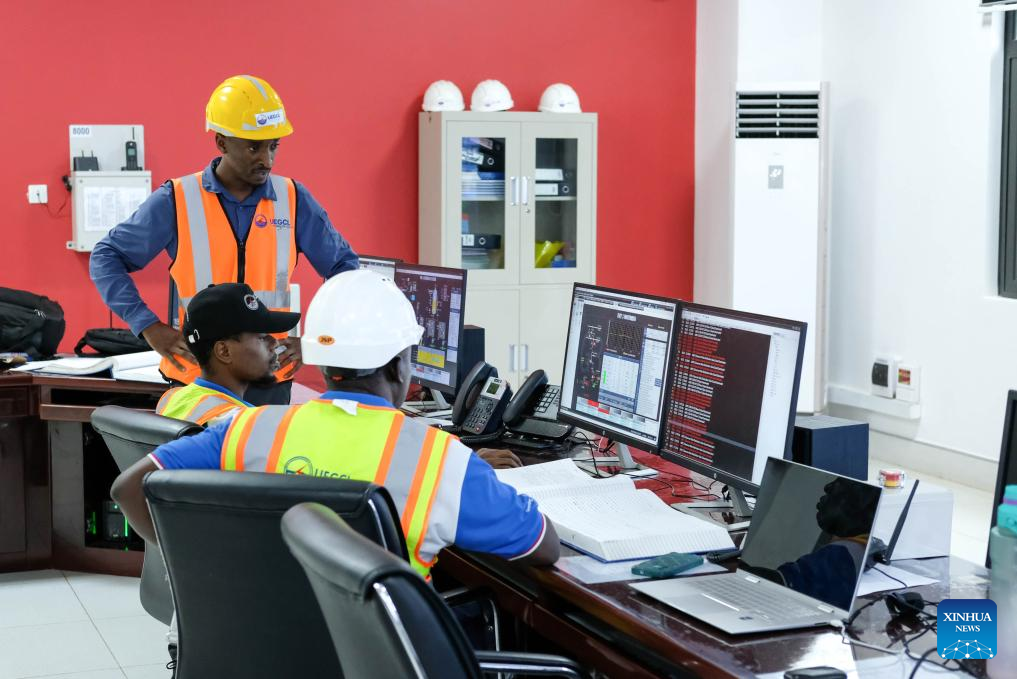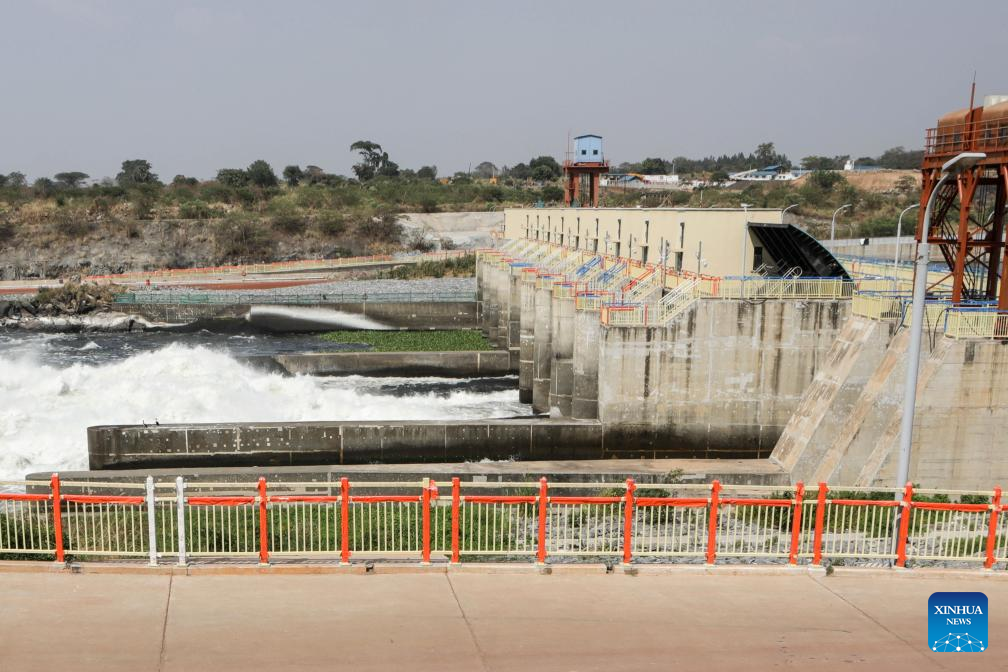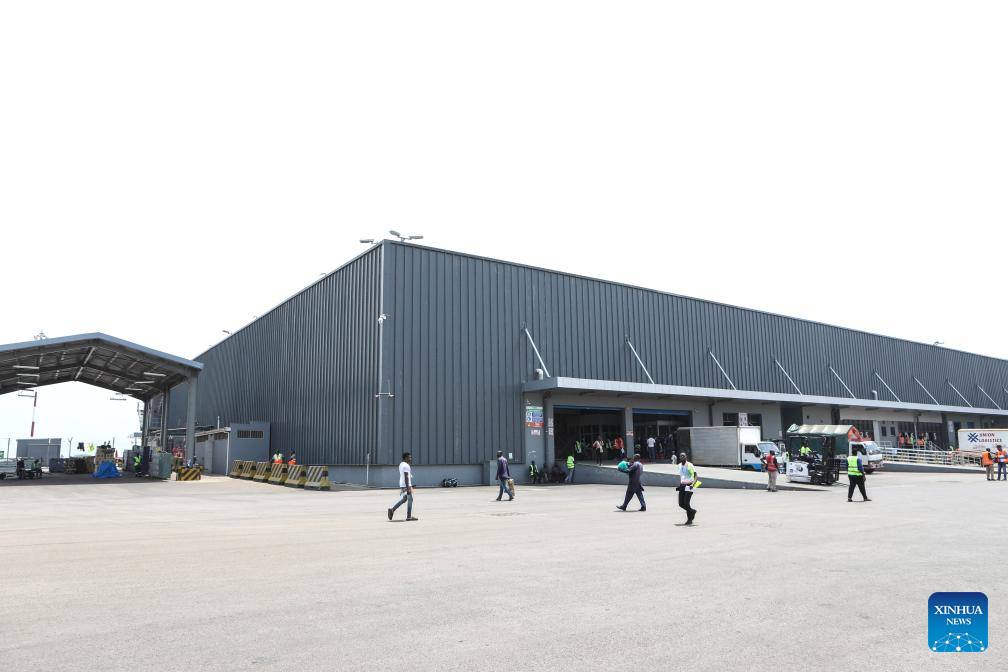
Workers talk at Karuma Hydropower Plant in Kiryandongo, Uganda, on Aug. 21, 2023. (Photo by Hajarah Nalwadda/Xinhua)
KAMPALA, Oct. 17 (Xinhua) -- From the remote hydropower plant in its mid-northern district of Kiryandongo to the hub airport in Entebbe, 36 km southwest of the Ugandan capital of Kampala, the East African country has witnessed the positive changes brought by China's Belt and Road Initiative (BRI), which marks the 10th anniversary this year since its inception.
Uganda is one of the many African countries that are seeking to fast-track development and reap benefits from the BRI, especially in sectors of energy and infrastructure, complemented by other programs like the South-South Cooperation framework and the Forum on China-Africa Cooperation.
At the Entebbe International Airport, the landlocked country's major gateway to the world, Chinese engineers and their Ugandan colleagues are working to upgrade and expand the 70-year-old air harbor, which had its last major refurbishment only in the early 1970s.
The upgrade and expansion of the airport facility is part of a 200-million-U.S.-dollar project financed by the Import-Export Bank of China.
"We are in the final stages of the first phase of the upgrade and expansion. A number of subcomponents of the project have been accomplished; for instance, a new state-of-the-art cargo center was completed in 2021, and it was operationalized. It has (the) capacity to handle 100,000 metric tons of cargo," Vianney Luggya, public affairs manager of Uganda Civil Aviation Authority, told Xinhua in a recent interview. "Now that we have a facility with bigger capacity, it is helping us. We are having more exports than imports of late, and the bulk of Ugandan exports comprise fresh produce."
China Communications Construction Company Ltd., the construction contractor, has also strengthened two runaways and some aircraft aprons, according to Luggya.
A new passenger terminal of 20,000 square meters is being constructed and will be completed in the middle of next year. This, according to Luggya, is anticipated to address the increasing passenger traffic pressure. When the terminal is complete, the airport will be able to serve 3.5 million passengers per year, compared to the current 1.8 million passengers.
"The new terminal building is coming in timely because the passenger traffic is growing, and the projections show it is going to grow more," said Luggya.
The airport expansion project is directly linked to the Kampala Entebbe Expressway, financed and constructed by China. The four-lane dual carriageway, with a length of 49.56 km, is already in operation linking the airport to Kampala.
The expressway was constructed to ease traffic congestion between the city and the airport. It reduced the travel time for motorists driving from Kampala to Entebbe to 30 minutes as compared to 120 minutes using the existing narrow and congested Kampala-Entebbe road, according to government data.
Further in mid-northern Uganda, along the River Nile, Chinese engineers and their Ugandan counterparts are in the final stages of testing and commissioning the 600-megawatt (MW) Karuma Hydropower Plant. The 1.7-billion-dollar power plant, partly financed by the Export and Import Bank of China, has been considered a flagship project in the bilateral relations between China and Uganda.
"It is going to add 600 MW to the Ugandan grid in terms of electricity supply. You remember some years back, about 10 or so, we were suffering from a lot of load shedding and persistent power cuts. And that is more or less a thing of the past," Albert Byaruhanga, project manager of the plant on behalf of the owner, Uganda Electricity Generation Company Ltd., told Xinhua.
The plant, according to experts, is critical in addressing the country's increasing electricity demand and promoting its industrialization.
Karuma is the second power plant financed by China after the 183-MW Isimba Hydropower Plant. Upon commissioning the 566-million-dollar Isimba plant in March 2019, the plant generated about one-fifth of the country's total power generated at the time. ■

A Chinese engineer interacts with local workers at Karuma Hydropower Plant in Kiryandongo, Uganda, on Aug. 21, 2023. (Photo by Hajarah Nalwadda/Xinhua)

This photo taken on Aug. 21, 2023 shows the Karuma dam at Karuma Hydropower Plant in Kiryandongo, Uganda. (Photo by Hajarah Nalwadda/Xinhua)

This photo taken on Aug. 17, 2023 shows a cargo center at the Entebbe International Airport, Central Region, Uganda. (Photo by Hajarah Nalwadda/Xinhua)


